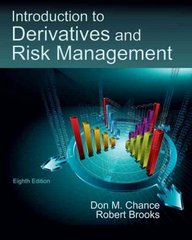Question
1. RETURN = LOSS / ORIGINAL COST 2. If Stock X has a higher profit than Stock Y, it is not fair to assume that
1. RETURN = LOSS / ORIGINAL COST 2. If Stock X has a higher profit than Stock Y, it is not fair to assume that Stock X has a higher HPR. 3. A quarterly return of 3% equates to an EAR of 12%. 4. Large company stocks tend to have larger standard deviations than small company stocks. 5. In a normal distribution, about 95% of all observations fall within two standard deviations of the average. 6. It is not possible to earn more than 100% in a single year. 7. In the CAPM equation, stocks with larger betas will have lower expected returns. 8. The SML intersects the risk axis when graphed. 9. The market risk premium would be the same for stocks with different betas. 10. It is fair to say that systematic risk can be diversified away. 11. Probabilities range from -100% to 100%. 12. When two states of the economy have probabilities of 50% and their possible returns are 8% and -10%, the expected return < 0%. 13. The standard deviation of the possible returns in #12 is more than 10%. 14. If a $20 stock sells for $30 after 4 years, its HPR > 40%. 15. The APR for the stock in #14 > 15%. 16. The EAR for the stock in #14 > 10%. 17. The average of 10%, 20%, -10% and 0% is less than 6%. 18. The standard deviation of the returns in #17 is more than 15%. 19. An equally weighted portfolio containing stocks with betas of 1.2 and 0.6 would have a beta < 1. 20. If a stock had a beta of 2 when market and risk-free returns were 10% and 2%, respectively, the expected return < 20%.
Step by Step Solution
There are 3 Steps involved in it
Step: 1

Get Instant Access to Expert-Tailored Solutions
See step-by-step solutions with expert insights and AI powered tools for academic success
Step: 2

Step: 3

Ace Your Homework with AI
Get the answers you need in no time with our AI-driven, step-by-step assistance
Get Started


